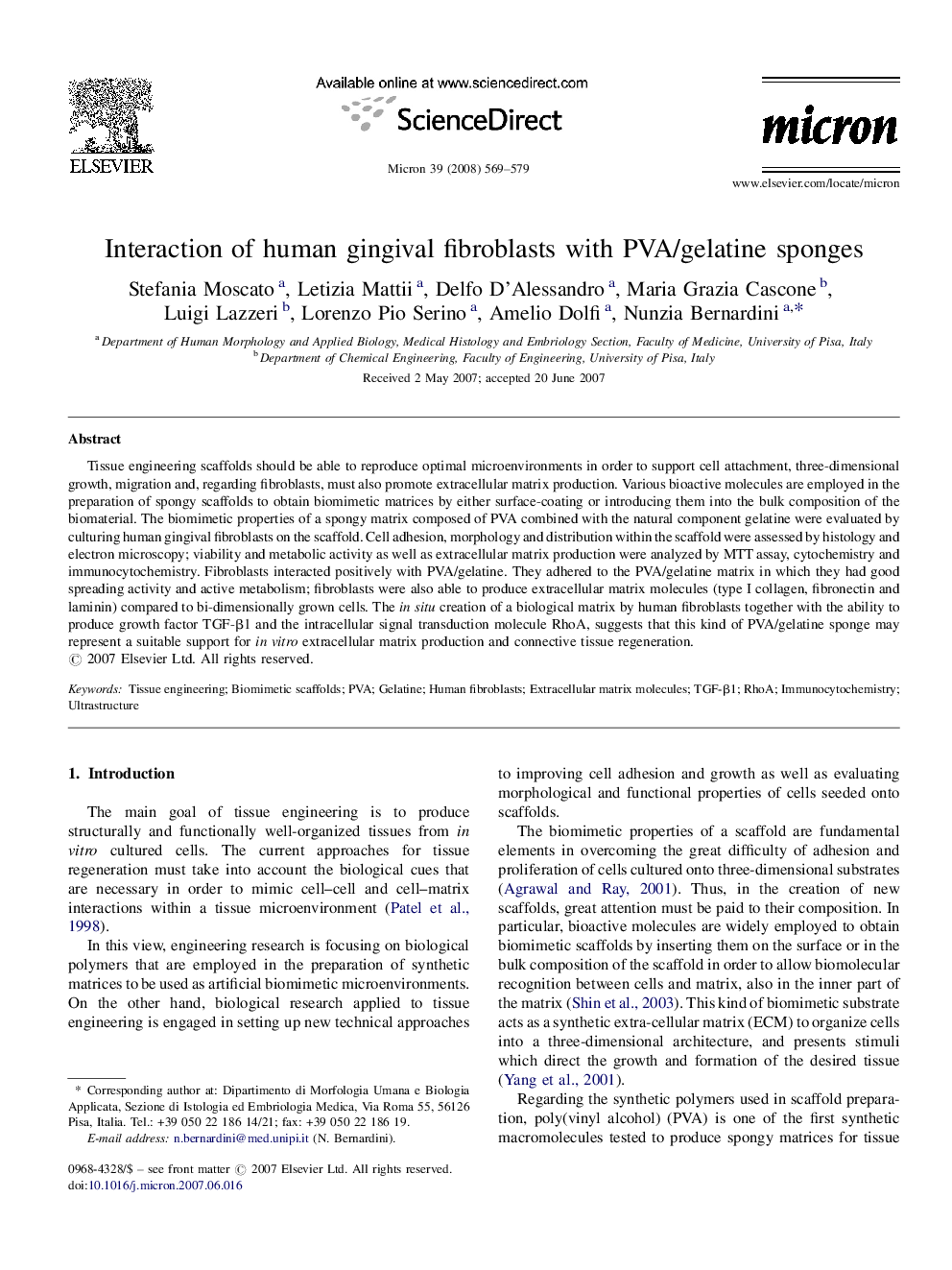| Article ID | Journal | Published Year | Pages | File Type |
|---|---|---|---|---|
| 1590047 | Micron | 2008 | 11 Pages |
Tissue engineering scaffolds should be able to reproduce optimal microenvironments in order to support cell attachment, three-dimensional growth, migration and, regarding fibroblasts, must also promote extracellular matrix production. Various bioactive molecules are employed in the preparation of spongy scaffolds to obtain biomimetic matrices by either surface-coating or introducing them into the bulk composition of the biomaterial. The biomimetic properties of a spongy matrix composed of PVA combined with the natural component gelatine were evaluated by culturing human gingival fibroblasts on the scaffold. Cell adhesion, morphology and distribution within the scaffold were assessed by histology and electron microscopy; viability and metabolic activity as well as extracellular matrix production were analyzed by MTT assay, cytochemistry and immunocytochemistry. Fibroblasts interacted positively with PVA/gelatine. They adhered to the PVA/gelatine matrix in which they had good spreading activity and active metabolism; fibroblasts were also able to produce extracellular matrix molecules (type I collagen, fibronectin and laminin) compared to bi-dimensionally grown cells. The in situ creation of a biological matrix by human fibroblasts together with the ability to produce growth factor TGF-β1 and the intracellular signal transduction molecule RhoA, suggests that this kind of PVA/gelatine sponge may represent a suitable support for in vitro extracellular matrix production and connective tissue regeneration.
